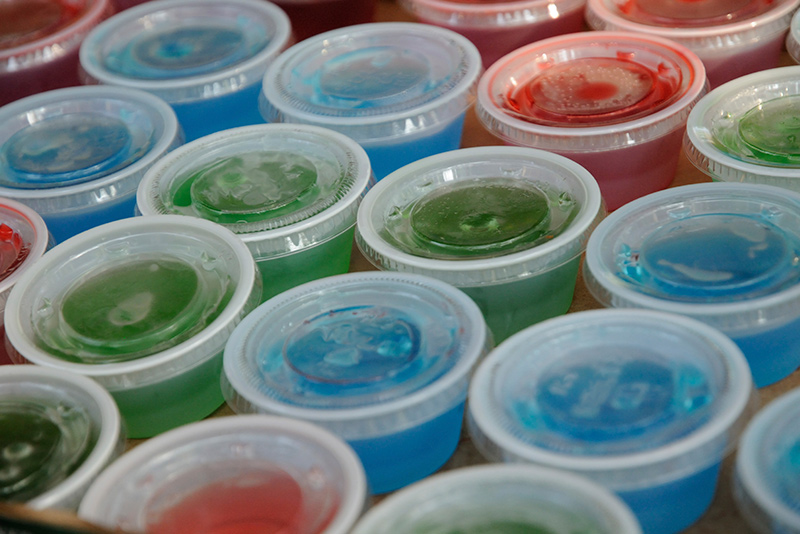Do Jello Shots Lead to Bingeing by Underage Drinkers?
Alcohol-infused gelatin tied to heavy drinking

About one in five underage youths reported consuming alcoholic Jell-O shots in the past 30 days, and those youths were more likely to binge drink, consume more alcohol, and to have been involved in physical fights related to their drinking than their peers who did not consume Jell-O shots, a study led by a Boston University School of Public Health (SPH) researcher shows.
In the study, published in the Journal of Child and Adolescent Substance Abuse, Michael Siegel, SPH professor of community health sciences, and colleagues from Johns Hopkins University and Fiorente Media Inc. of Boston used a national sample of 1,031 youths, ages 13 to 20, to assess past 30-day consumption of Jell-O shots.
Jell-O shots are alcohol-infused gelatin that can be made at home or sold in bars. Siegel and colleagues say they may contribute to the initiation of alcohol use among novice drinkers “through use of a recognizable, widely available, appealing product such as Jell-O as a channel for alcohol consumption.”
This is the first study that sought to gauge the extent of Jell-O shot consumption among underage youths.
The study found the prevalence of past-month Jell-O shot consumption among the underage drinkers sampled was 20.4 percent—slightly higher for females than males. There were no significant differences by age, race, or region—but there was a trend of increasing Jell-O shot use with lower levels of household income, as well as a higher prevalence among those without internet access, according to the findings.
Jell-O shot users were “significantly more likely to drink heavily” than those who did not consume the shots, consuming alcohol 2.2 days more per week, on average, than non-users, the study found. The average number of alcoholic beverages consumed per month for Jell-O shot users was also significantly higher, at 30.9 drinks per month, compared to an average of 18.8 drinks per month for non-users.
The study found that Jell-O shot consumption was also associated with an increase in engaging in physical fighting when drinking. A total of 18.7 percent of Jell-O shot users reported getting into a physical fight after consuming alcohol, compared to 9.5 percent of non-users.
The most common types of alcohol reported as being used in Jell-O shots were bourbon and vodka. Although the survey did not specifically ask what brand of alcohol was used in the shots, the most common bourbon brand consumed among youths who reported using bourbon in their shots was Jack Daniels, and the most common vodka brands reported were Smirnoff and Absolut.
The authors say their findings have several important public health implications—namely, that national agencies and organizations should consider adding Jell-O shot consumption to their youth alcohol use surveillance systems.
Siegel says that while the researchers could not conclude that Jell-O shot consumption was the cause of heavier drinking among youths, such consumption “appears to be associated with riskier patterns of alcohol use and increased risk of adverse consequences, suggesting that specific interventions to address this consumption may be warranted as part of the effort to reduce risky alcohol use among youths.”
He and his co-authors recommend further research to clarify the causal relationship between Jell-O shot consumption and risky patterns of drinking, and to explore which popular brands are used most in preparing the shots.
The study was funded by a grant from the National Institute on Alcohol Abuse and Alcoholism. Besides Siegel, co-authors are Ashley Galloway, a recent SPH grad; Craig S. Ross of Fiorente Media Inc.; and Jane Binakonsky and David H. Jernigan of the Johns Hopkins Bloomberg School of Public Health.
Comments & Discussion
Boston University moderates comments to facilitate an informed, substantive, civil conversation. Abusive, profane, self-promotional, misleading, incoherent or off-topic comments will be rejected. Moderators are staffed during regular business hours (EST) and can only accept comments written in English. Statistics or facts must include a citation or a link to the citation.